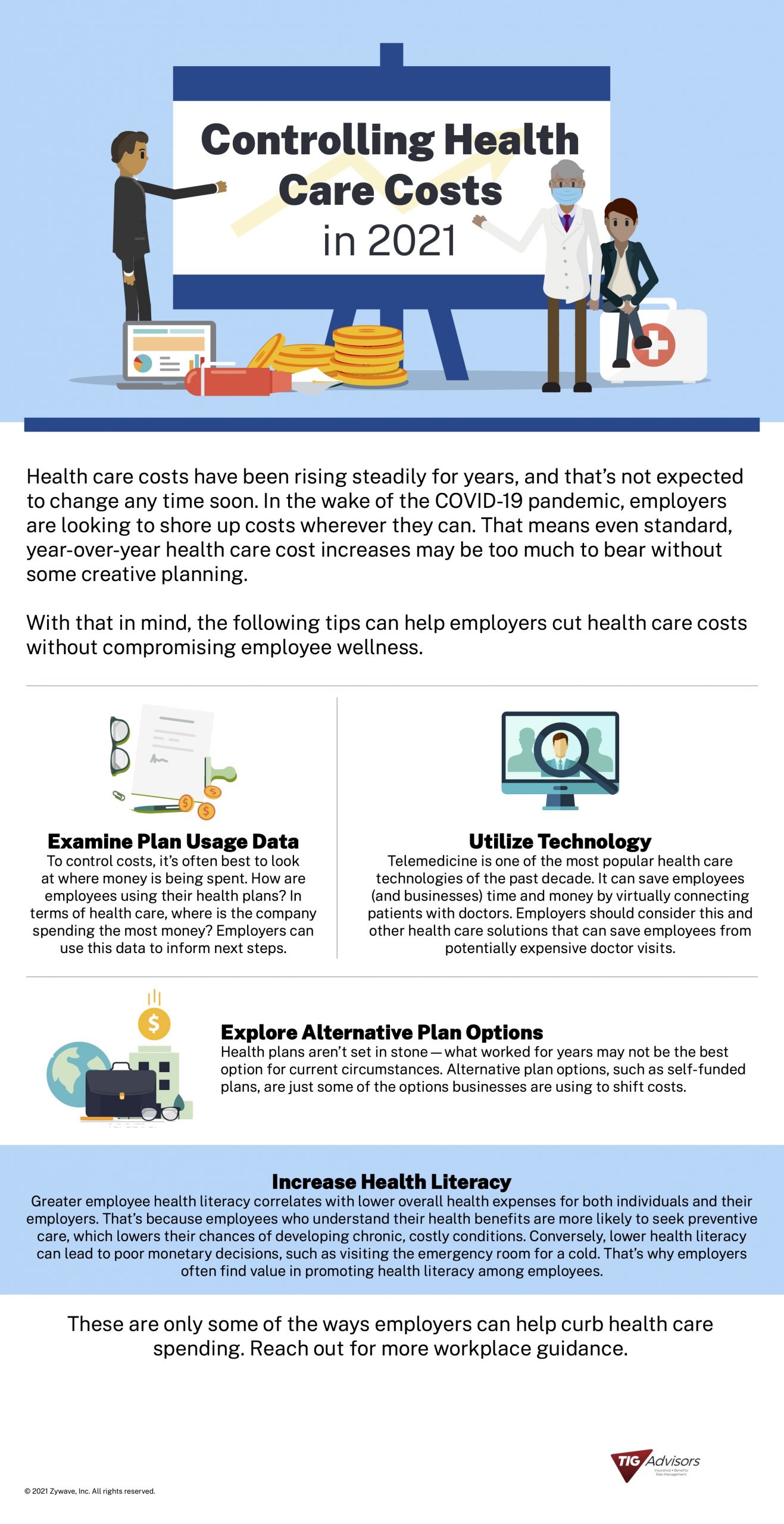Plain-text transcription of the infographic:
Controlling Heath Care Costs in 2021
Health care costs have been rising steadily for years, and that’s not expected to change any time soon. In the wake of the COVID-19 pandemic, employers are looking to shore up costs wherever they can. That means even standard, year-over-year health care cost increases may be too much to bear without some creative planning.
With that in mind, the following tips can help employers cut health care costs without compromising employee wellness.
Examine Plan Usage Data
To control costs, it’s often best to look at where money is being spent. How are employees using their health plans? In terms of heath care, where is the company spending the most money? Employers can use this data to inform next steps.
Utilize Technology
Telemedicine is one of the most popular health care technologies of the past decade. It can save employees (and businesses) time and money by virtually connecting patients with doctors. Employers should consider this and other health care solutions that can save employees from potentially expensive doctor visits.
Explore Alternative Plan Options
Health plans aren’t set in stone—what worked for years may not be the best option for current circumstances. Alternative plan options, such as self-funded plans, are just some of the options businesses are using to shift costs.
Increase Health Literacy
Greater employee health literacy correlates with lower overall health expenses for both individuals and their employers. That’s because employees who understand their health benefits are more likely to seek preventive care, which lowers their chances of developing chronic, costly conditions. Conversely, lower health literacy can lead to poor monetary decisions, such as visiting the emergency room for a cold. That’s why employers often find value in promoting health literacy among employees.
These are only some of the ways employers can help curb health care spending. Reach out to us here at TIG Advisors for more workplace guidance.



